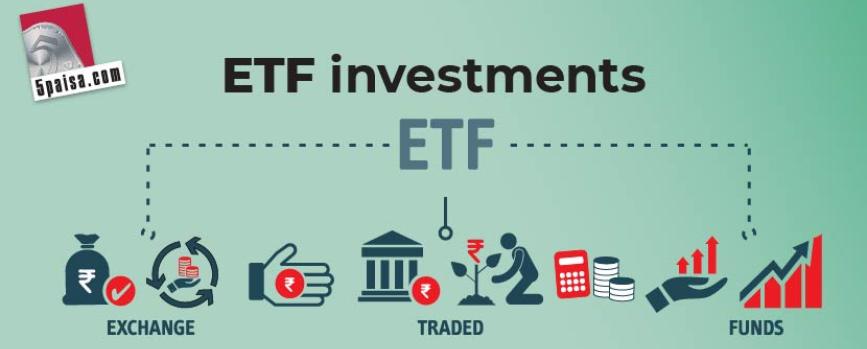Kya ETFs Investments Sahi Hai?

Exchange Traded Funds or ETFs have witnessed exponential growth in the past few years. In the year 2021 alone, 18 new ETFs were launched by Indian mutual fund (MF) companies. In fact, many market experts prefer ETFs over regular mutual fund investments.
But before investing in an ETF, investors need to understand its basics. What is an ETF? How is it different from a regular mutual fund scheme? What are the factors driving the growth of ETFs? How are we enabling ETF investments? Let us take a deep dive into all these questions.
What is an ETF?
An ETF comprises a portfolio of stocks which mirror the composition of the underlying index. ETFs are also known as passive funds because there is no active churning of portfolio taking place. ETFs are listed on the stock exchanges where investors can trade in them just like they trade in stocks. ETFs are of diverse types basis the indices they invest in – sector specific indices, theme-based indices, international indices, among others.
Types of Equity ETFs in India
- Benchmark Nifty or Sensex
- Bank, Infrastructure sector
- Midcap
- Dividend stocks
- Global indices
Types of non-equity ETFs in India
- Debt
- Gold
- Silver
Factors to consider before investing in an ETF:
- Underlying benchmark index
- High trading volumes
- Low tracking error
- Low expense ratio
Key advantages of ETFs
- No minimum investment required
- Easy to trade any time during the trading session
- Lower costs vis-a-vis other investment options
- Highly transparent as ETFs are mostly based on an existing index (the constituents are well known)
- Ease of transacting via different types of orders
- Diversification across stocks/asset classes
How do ETFs stack up against MFs?
|
ETFs |
MFs |
|
Costs involved |
|
|
|
|
|
|
Investment details |
|
|
|
|
|
|
Trading benefits |
|
|
|
|
|
|
|
|
Performance objectives |
|
|
|
|
Tax benefits |
|
|
|
How have ETFs grown in India?
ETFs have grown rapidly in India owing to the high convenience, liquidity and several other benefits they provide.
• Assets managed by ETFs have grown 72% in 2021 (till September), while those managed by the overall MF industry have increased 36%
• Share of ETFs in total MF assets under management has grown 2% in the past one year and now stands at 10% of the total pie
• ETFs added 6 lakh folios in September 2021 as against 31 lakh folios added by mutual fund industry

Overall, assets under management of ETFs in India have surged 147% over the past two years.

Factors Driving Growth of ETFs
• Rising awareness among investors about the benefits of ETFs
• Investors can purchase 1 unit of ETF for as low as ₹10
• Most preferred ETFs are replica of indices, which provide retail investor an opportunity to invest in index directly instead of underlying stocks
• The delta of ETF to indices is almost 1 which means that the ETF will move exactly same as index, removing the risk of underperforming
• ETFs have low overheads as compared to normal MFs, which is reflected in their overall performance
Why Liquid funds seem less Attractive Now
• Amid lower interest rates, returns on liquid fund schemes have fallen to below 4% over the past year (Source: AMFI)
• Relatively higher default risk and interest risk
• Regulatory changes
Starting April 2020, all bonds must be compulsorily marked to market
SEBI recently introduced a graded exit load of 7 days for Liquid funds and the AMCs
How Does 5paisa Enable ETF Investments?
We at 5paisa are very bullish on ETFs, especially due to the benefits they provide to the retail investors. Through our platforms, investors can choose from all ETFs, for as low as zero cost in case of delivery trades. They can build a portfolio in ETFs by entering at the right price while capitalizing on intraday market swings. Alternatively, they can use ETFs for trading in indices at low ticket sizes compared to regular stocks. In FY22 so far, number of ETF customers and ETF assets under management on 5paisa platforms have grown more than 2 times and 4 times, respectively.
Start Investing in 5 mins*
Rs. 20 Flat Per Order | 0% Brokerage
